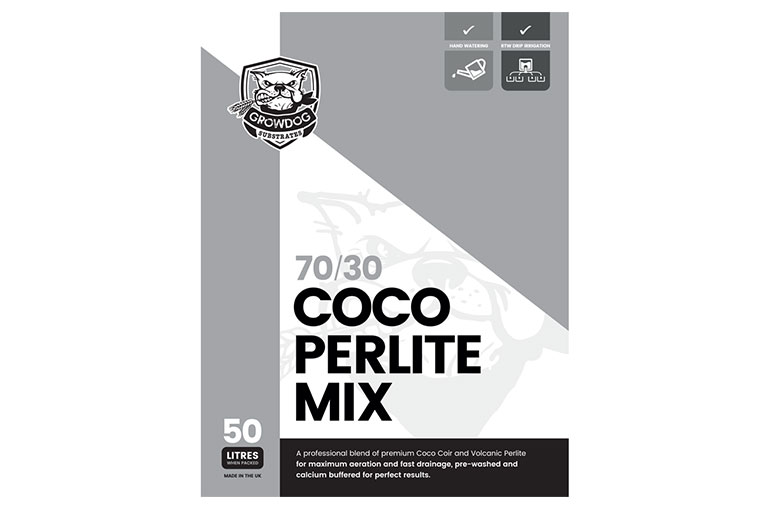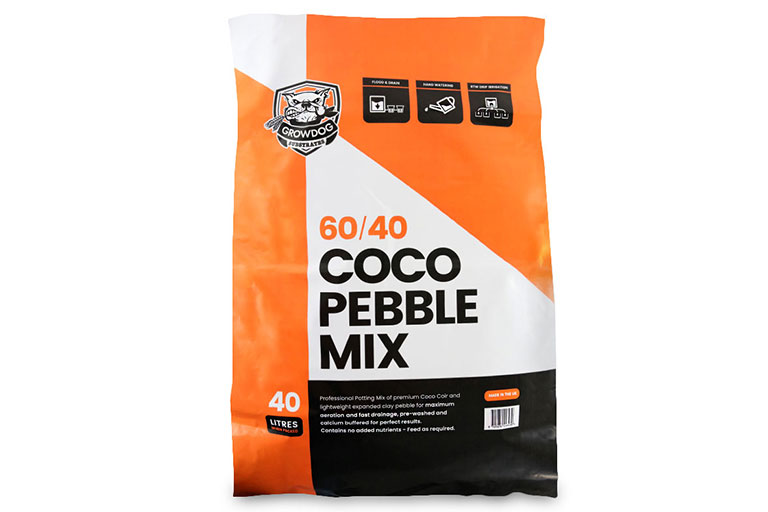Hand Feeding Plants
Hand feeding plants is the act of watering plants and crops manually. Many people use something as simple as an indoor watering can. When hand feeding plants, you need to saturate the root zone with a water and nutrient solution to last until the next feed.
Hand Feeding Plants – Water To Achieve Run-Off
For the very best results from hand feeding plants, you’ll need to overwater the media by around 20%. When you overwater by 20% you avoid issues with nutrient lock by washing old nutrients from the media. You’ll replace the old, tired nutrients with fresh nutrients for your plants to access. With fresh, readily-accessible nutrients available, your plants will grow explosively.
As you’ll be over-watering, you’ll need to deal with the run-off. You can do this manually, by placing saucers under each pot and removing it yourself, 1 pot at a time. Or you can save yourself the backache and automate this arduous task, using a unidrain Away waste management system.
unidrain Away – Waste Management System
unidrain Away is a simple waste management unit that takes all the effort out of hand feeding plants. unidrain uses specially designed floor stands and plumbing to guide the run-off to the system brain. The system brain collects the run-off automatically and pumps it where you want it to (usually to a drain).
Garden tip: The System Brain can act as a rudimentary dirty water pump and be used in a plethora of applications, such as for a temporary garage sink dirty water management system and pump the water to a water butt. You could also use it to move water from one water butt to another.
It is simple to use: put your fabric plant pots on the unidrain floor stands and hand water. Let the unidrain Away waste management system take care of the run-off as waste for you.
Garden tip: unidrain is also available as a full drip and drain automated feed and waste management system. The system is fully expandable and simple to expand or break down to a smaller system top suit your needs.
Read all about unidrain systems in their very own blog.
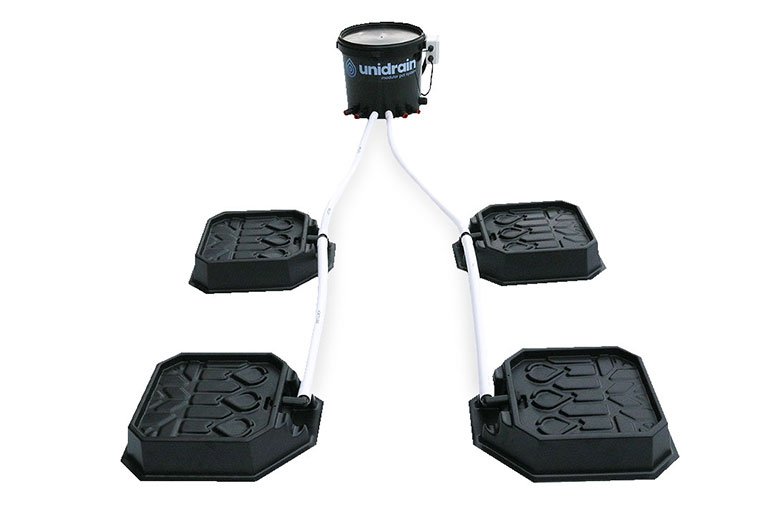
Benefits of Hand Feeding Plants
Hand feeding plants is the most simple and common method of growing around the world.
Positive:
- The hand feeding plants method requires the least amount of equipment.
Negative:
- Hand feeding plants requires more physical time and effort versus an automatic plant feeding system, like the unidrain Drip and Drain feed and waste management system (pictured above).
Great for learning
Hand feeding plants is a great way to learn more about your plants. You can get intimate feedback on what they need and when, giving you the hands on day to day closeness that some grow systems don’t.
It may sound easy, but there are many points to consider when hand feeding plants.
You need to consider:
- The plant’s optimal size
- Which growth stage the crop is in
- What time of the light cycle it is
- The current moisture level of the soil/medium. Learning all of this will no doubt make you a much better grower in the future.
Cost Effective
With hand feeding you will most definitely have a much lower initial financial outlay in comparison to growing in an automated or tech heavy system as all you will need is basic gardening equipment such as:
Simple Technique for Beginners and Suits Small Gardens
If you are just starting off in indoor gardening, then hand feeding is a great introduction to raising a few small plants. Hand feeding plants allows you to start small and without having too much technical knowledge to start with. You will learn most of what you need to know along the way. If you find you like growing your own plants, you can grow your kit with your newfound expertise.
Compatible with Organic Feeds
If you are looking to go down the organic route, hand feeding plants is the way to go. In a soil-based, hand fed pot system, microbes convert organic fertilizers to plant accessible nutrients. This wouldn’t be possible if you were growing in a hydroponic system, due to the lack of microbial activity.
Natural With Rich Flavours
Hand feeding plants in soil is great if you are growing vegetables. Growing consumable plants in soil is as natural as you can get to the conditions that your plants would normally grow in. Soil contains natural levels of all nutrients and buffers.
Growing plants in soil works to deepen their flavours, and makes them stronger, and more desirable.
Ultimate Control Of Feeding Plants
Hand feeding ensures that you know exactly what your plants are getting and when. If you are wary and don’t want to leave it all up to a pump or automated reservoir, then hand feeding can help put your mind at ease. It can also help to eliminate under- and over-feeding.
Treat Every Plant Individually
Another benefit of hand feeding plants: Sometimes, an individual plant in the same crop can grow faster, slower or have specific health issues. With hand feeding, because each plant is in its own pot, and is your watering it separately, you can address these issues individually. It allows you to give them the tailored nutritional care that they need. All aside from what the main crop requires.
Top Tips For Hand Feeding Plants
Use Fabric Pots
One issue in a pot system is limited space for roots in comparison to other systems. Plant roots tend to grow in one direction until they hit a barrier, which prevents them from branching as much. It may also cause roots to circle around the inside edge of your pot, leaving all the central space (and nutrients) wasted.
When using a fabric pot you’ll get a bigger, stronger, healthier root network with lots of secondary roots. Fabric pots are made of breathable fabric. This allows air to reach the root zone, when the roots reach the outside of the pot they are naturally pruned, which triggers branching further back down the root. This reduces or even eliminates root circling and stimulates the production of secondary roots. Air pruning plant pots boost the overall root mass to fill the pot and increase nutrient and water uptake. We recommend Air Pruner plant pots to grow
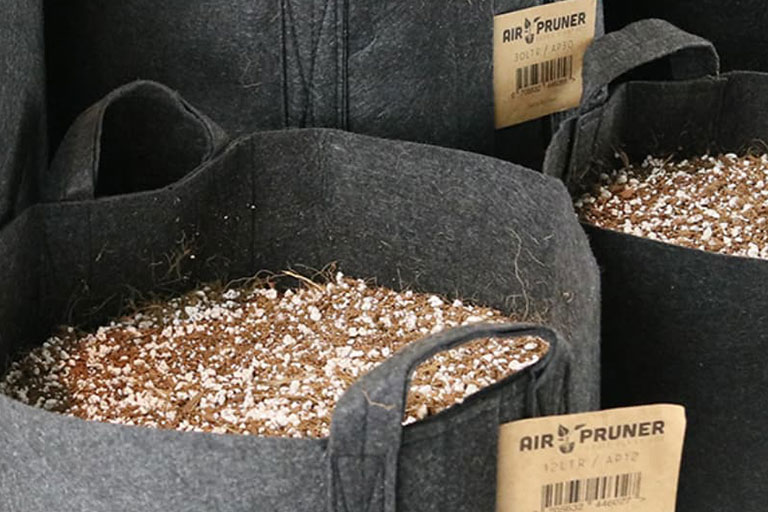
Choose Your Potting Medium Wisely
Soil and Coco are the two most popular growing mediums for growing indoors. Each have their own, individual benefits. Soil is a must for Organic Growing, and also holds a natural level of nutrients. It also gives more flavour to your consumable produce.
Coco
Coco (also known as coco-coir) is made from coconut husks and is an inert, highly moisture retentive medium. It can hold onto large amounts of nutrient salts. For hand feeding plants, we suggest using a 70/30 coco perlite or 60/40 coco pebble mix. The pebbles are the hydroleca clay ball style pebbles. Hydroleca pebbles and Perlite act to improve water retention, drainage and help to avoid compaction.
Soil
There are mixes of soil (and coco) available that contain perlite, vermiculite or clay pebbles that help with further moisture retention, drainage and aeration. Do some research on what you are growing and what it needs from a medium before buying. We recommend GrowDog Soil Perlite to anyone looking to grow in soil when hand feeding plants.
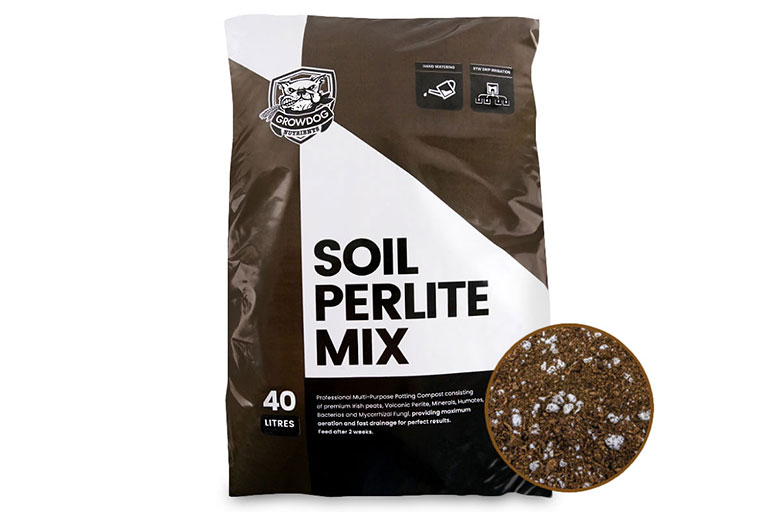
Pre-Soak Coco
As discussed, Coco can hold onto masses of nutrient salts. However, not all of this will be available to your plants. If you are using Coco, in order to make sure your plants have access to enough nutrients, you should pre-soak it before planting. To pre-soak your coco media, apply a 3/4 to full strength feed until you start to get run-off from the bottom of the pots.
Water Plants Accurately – Achieve 20-30% Run-Off
How often you water your plants will depend on several factors, such as:
- Size of the pot
- Growroom temperature
- Humidity levels
A good tip is to water until you see about 20-30% of run off. Over-watering can be just as disastrous as under-watering.
For optimal root conditions, the planting media needs to be airy as well as moist. Healthy roots need access to oxygen pockets for gaseous exchange. If it gets too wet, there won’t be enough air pockets/oxygen in the soil and your roots will essentially drown.
Handling Run-Off As Waste
If you want to simplify handling the run-off, use unidrain floor stands with some Iceline tubing to guide the run-off away from the pots to waste.
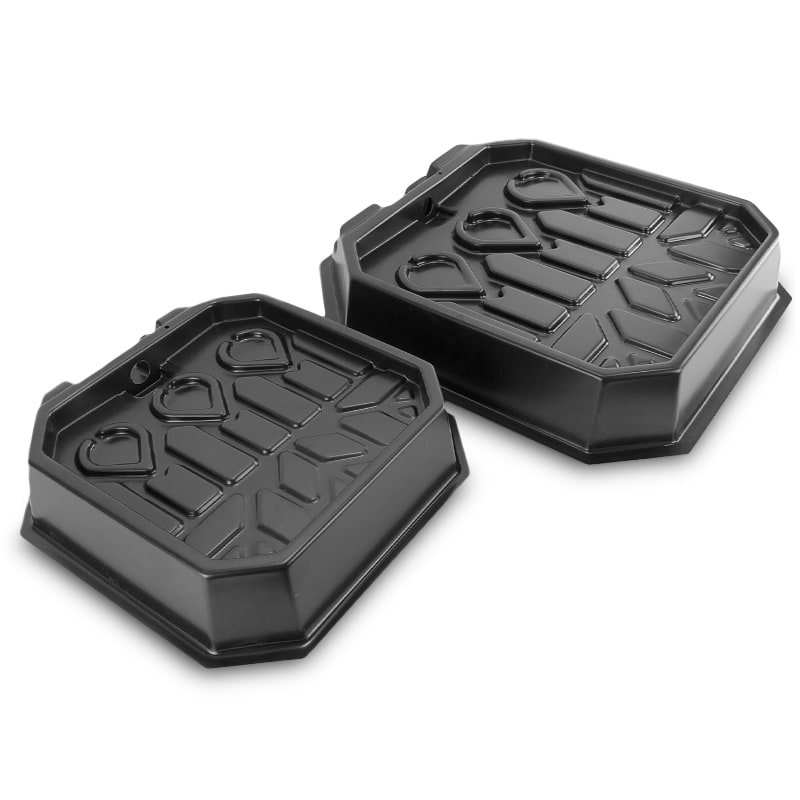
Automate Feeding and Handling The Run-Off
If you want to automate handling your run-off, use an unidrain Away system. If you want to automate feeding and handling the run-off, use an unidrain, fully automated feed and waste system.
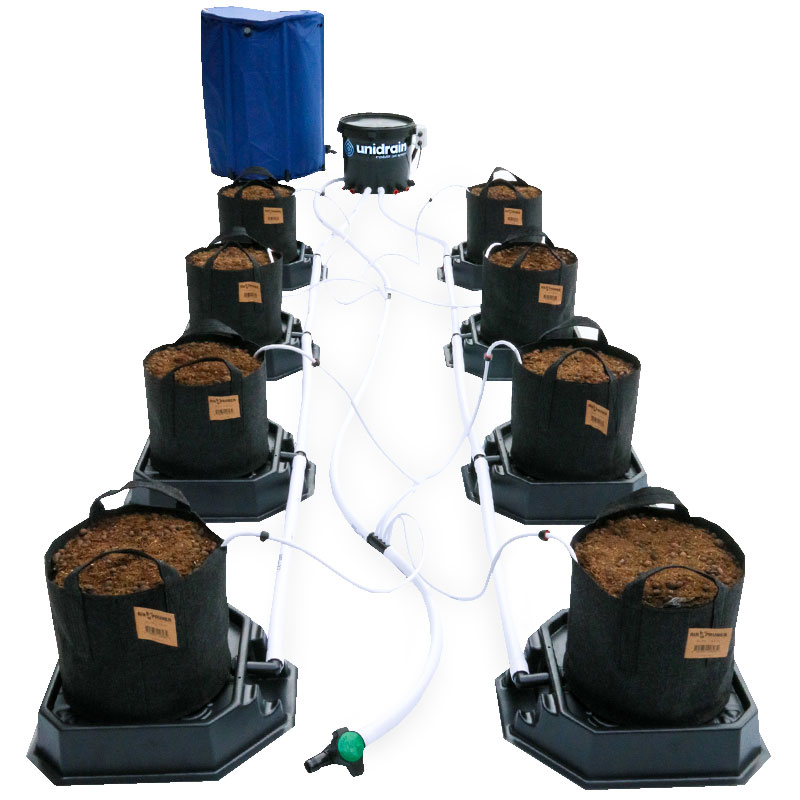
Measure and Monitor pH and EC
Measuring the pH and EC and of your nutrient solution is important. They will let you know how much feed your plants are, or are not consuming, meaning you can then tailor any further feeds to take this into account.
pH
Your pH tells you how acidic or alkaline your solution is. Ideally, the pH should be between pH 5.5 and pH 6.5. Any lower or higher than this, and conditions in your medium will be either too acid or too alkaline for your plants to adequately take up what they need. You can read pH levels using a Bluelab pH pen.
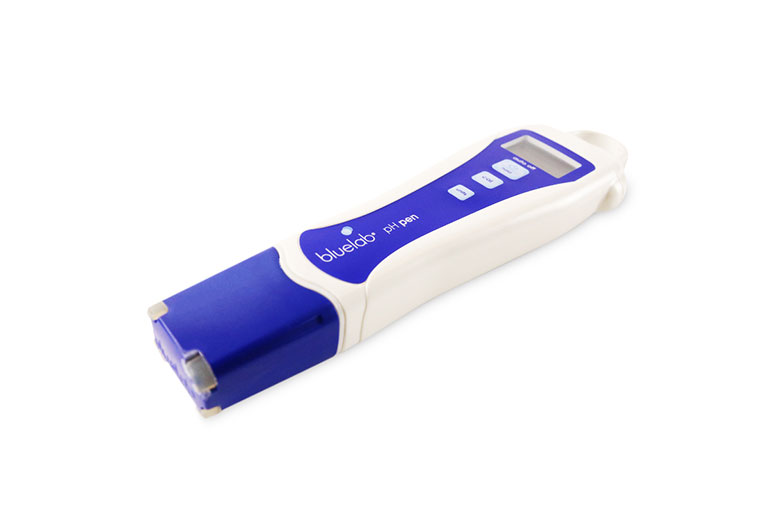
EC
EC stands for Electrical conductivity and tells you the levels of nutrient salts present in your feed. To measure the EC of your nutrient solution using a digital meter, such as the Bluelab CF Truncheon. Too high an EC and your plants will lock out some or all nutrient uptake The exact nutrient strength you aim for depends on a lot of factors. However, on average, you should aim for the following:
- Young plants = 0.6 – 1.2
- Establishing plants = 1.0 – 1.6
- Mature plants = 1.5 – 2.0
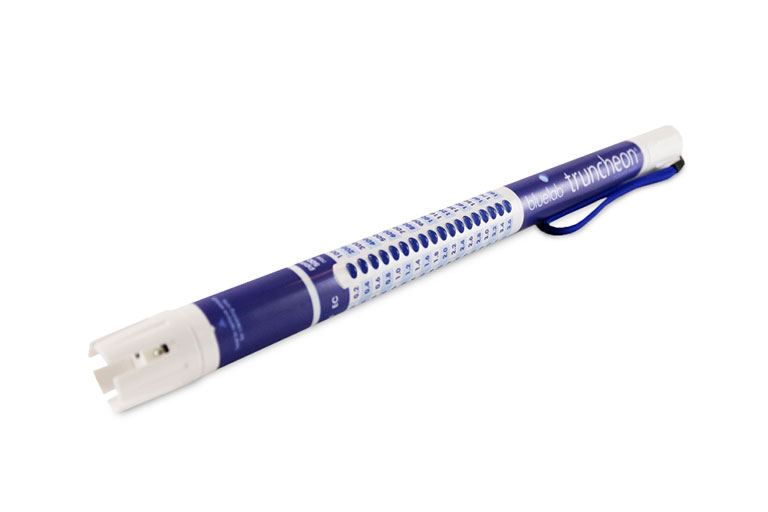
Conclusion
As you can see, hand feeding plants is a great introduction into indoor gardening. It provides you with the opportunity to learn about your plants and your equipment. Hand feeding plants will allow you to intimately develop your feeding technique.

